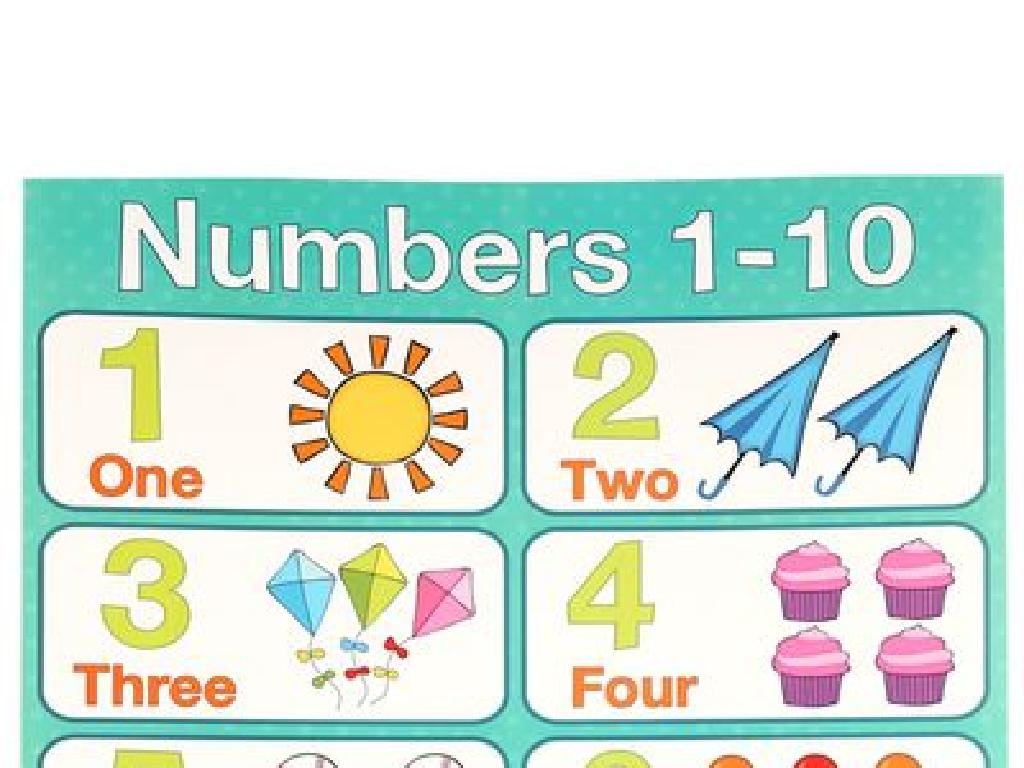What Do Animals Need To Survive?
Subject: Science
Grade: First grade
Topic: Animals
Please LOG IN to download the presentation. Access is available to registered users only.
View More Content
Welcome to the Animal Kingdom!
– Animals are living things
– Just like us, animals need certain things to live
– Survival needs of animals
– Food, water, shelter, and air are necessary
– Exploring animal essentials
– We’ll learn why each one is important for animals
– Discussing our ideas together
|
This slide introduces the concept of animal survival to first graders. Begin by explaining that animals are living things and, like humans, they have basic needs that must be met in order to survive. Discuss the four main survival needs: food for energy, water for hydration, shelter for protection, and air for breathing. Engage the students by asking them to think about what they need to survive and relate it to animals’ needs. Encourage them to share their thoughts and ideas on why each of these elements is essential for animals. This will help them connect with the material and understand the importance of each need in the context of animal survival.
What Are Animals?
– Animals are living beings
– Just like us, animals are alive and need care
– They have basic needs
– They need food, air, and water to survive
– Animals grow and reproduce
– From tiny insects to big elephants, all animals grow up and have babies
– Can you name animals?
– Think of pets, zoo, or farm animals you know
|
This slide introduces the concept of animals to first graders by highlighting that animals are living things with needs similar to humans. Start by explaining that animals are diverse but share common characteristics such as eating, breathing, growing, and reproducing. Engage the students by asking them to name animals they are familiar with, which could include pets, animals they’ve seen at the zoo, or on a farm. This will help them connect the concept of animals to their real-world experiences. Encourage them to think about how animals grow from babies to adults and how they take care of their young. The goal is to foster empathy and understanding of animals’ basic needs.
Basic Needs of Animals
– Animals need food
– Just like us, animals eat to grow and get energy
– Animals need water
– Water keeps animals hydrated
– Animals need air
– Breathing air is essential for animals to live
– Animals need shelter
– Shelter protects animals from weather and predators
|
This slide introduces the fundamental needs of animals, which are essential for their survival. It’s important to convey to first-grade students that animals require these basic necessities just like humans do. Food provides the necessary nutrients and energy for animals to grow and thrive. Water is crucial for hydration and the proper functioning of their bodies. Air is needed for animals to breathe and get oxygen, which is vital for life. Lastly, shelter offers a safe place for animals to live and protect themselves from the elements and predators. Use examples like pets at home or animals in the zoo to illustrate these points in a way that’s relatable to the students. Encourage them to think about how they help take care of animals by providing these necessities.
Food for Energy: What Animals Eat
– Animals need food for energy
– Different animals eat different foods
– Herbivores eat plants, Carnivores eat meat, Omnivores eat both
– Exploring animal diets
– Examples: Cows eat grass, Lions eat meat, Bears eat fish and berries
– Importance of a balanced diet
– Just like us, animals need the right kinds of food to be healthy
|
This slide introduces the concept that all animals require food to survive, but they have varied diets. Start by explaining that food provides the energy animals need to move, grow, and stay healthy. Discuss the different types of diets: herbivores eat only plants, carnivores eat only meat, and omnivores eat both. Use relatable examples like cows, lions, and bears to illustrate these points. Emphasize the importance of a balanced diet for animals, drawing parallels to the children’s own need for various types of food to stay healthy. Encourage the students to think about what their favorite animals eat and why it’s important for them to have the right kind of food.
Water is Life for Animals
– Water keeps animals hydrated
– It’s vital for body functions
– Animals find water in different ways
– Rivers, lakes, rain, or even plants!
– Let’s think about water sources!
– Can you imagine where a bird or a squirrel might find water?
|
This slide introduces the importance of water to animal survival, emphasizing that water is essential for staying hydrated and for the proper functioning of their bodies. Encourage the students to think about and discuss different ways animals might find water in their environments, such as rivers, lakes, puddles after rain, or moisture from plants. Use this opportunity to spark curiosity by asking them to consider how different animals, like birds or squirrels, might search for and access water. This discussion can lead to a broader conversation about animal behaviors and adaptations related to water sourcing.
Breathing Air: A Necessity for Animals
– All animals need air to live
– Fish breathe using gills
– Fish extract oxygen from water
– Land animals use lungs
– Like humans, many animals have lungs
– Different animals, different methods
– Insects breathe through tiny holes
|
This slide introduces the concept of respiration in animals, emphasizing the universal need for air to survive. It’s tailored for first graders by simplifying the explanation of how different animals breathe. Fish use gills to get oxygen from water, while land animals typically use lungs. Some animals have unique ways of breathing, such as insects, which use spiracles (tiny holes in their bodies) to breathe. Encourage students to think about their own breathing and relate it to how animals might feel needing air. You can demonstrate this by having them hold their breath for a few seconds to feel the urge to breathe. This activity will help them appreciate the importance of air for survival.
Animal Homes and Shelters
– Shelter protects animals
– Keeps safe from weather and predators
– Various homes for animals
– Nests, burrows, caves, trees, etc.
– Exploring animal shelters
– Examples: Birds in nests, rabbits in burrows
|
This slide introduces the concept of shelter as a basic need for animals’ survival. Explain that just like humans, animals also need a place to live to protect themselves from harsh weather and to stay safe from predators. Show pictures of different animal homes such as nests, burrows, and caves, and discuss how each home is suited to the animal’s needs and environment. Encourage the students to think about why an animal chooses a particular type of home and how it helps them survive. You can plan an activity where students match animals to their correct homes or create their own animal home with craft materials.
Class Activity: Animal Survival Needs
– Match animals to their survival needs
– Use your worksheet for this activity
– Find the pictures of animals and their needs
– Draw lines to connect correctly
– Think about what each animal needs to live and be happy
– Have fun learning about animal needs
|
This activity is designed to help first graders understand the basic needs of animals for survival. Provide each student with a worksheet that has pictures of various animals on one side and pictures of different needs (food, water, shelter, air) on the other. Instruct the students to draw a line from each animal to the picture of the need that corresponds to it. For example, a fish to water, a bird to a nest for shelter, etc. This will help them visually connect the concept of survival needs with real animals. Possible variations of the activity could include matching baby animals to their parents, matching animals to their habitats, or even a group activity where students discuss and decide on the needs together before drawing the lines.
Congratulations, Young Animal Experts!
– Great job learning about animals!
– Animals need food, water, air, shelter
– Like us, animals eat for energy, drink water to stay hydrated, breathe air to live, and seek shelter for safety.
– You’re now animal survival experts!
– Keep observing animals around you
– Notice how pets, birds, bugs, and other animals live and use these essentials.
|
This slide is a celebratory conclusion to reinforce the key survival needs of animals that the students have learned. It’s important to recap the essentials: food, water, air, and shelter, to ensure retention. Acknowledge the students’ effort in learning these concepts and encourage them to take pride in their new knowledge as ‘animal experts.’ Motivate them to continue observing animals in their environment to see these survival needs in action, which will help solidify their understanding through real-life examples.





